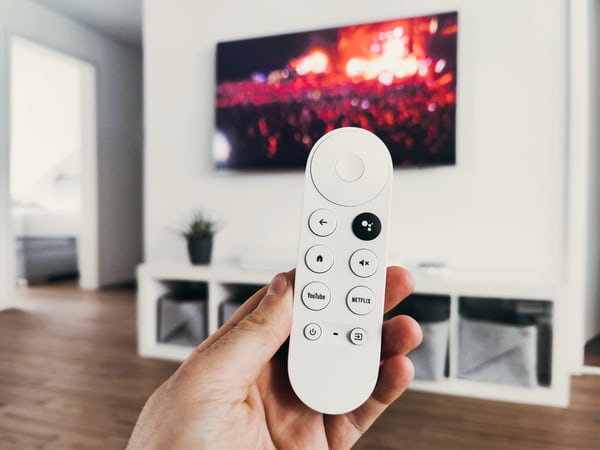The bedroom can quite often be the favourite room in the house as it gives off a comfortable and relaxing atmosphere. Within this space many people prefer to have a TV however, a TV can offer several pros and cons within a bedroom. Although some believe that a TV allows them to unwind after a long hard day, others believe that a TV in your room has the ability to keep your mind active, resulting in less sleep and increased brain activity. When placing a TV in the bedroom, there are several factors that need to be considered that will be discussed within this guide.
Smart TV or normal TV
Before splurging on a new TV, it is important to consider if a smart TV or normal TV would benefit you more. As smart TVs dominate the market, you may be tricked into buying a smart TV when you don’t even know the features, or if they will be of benefit to you. It is important to note that smart TVs offer additional streaming services through an internet connection, whereas a normal TV can only provide you with live TV and radio services. Nowadays, most individuals are more likely to opt for a smart TV due to the high demand for streaming services however, this does not mean that they need to rule out a smart TV if they want access to live TV. Live TV can still be accessed as long as you have a working TV aerial. For TV installations do not hesitate to contact the professionals at https://tayloraerials.co.uk . So, for these reasons, it is important to consider what kind of TV you will get the most use out of in your bedroom.
Size
As some bedrooms are not always the largest, it is important to consider the TV size in comparison to the bedroom dynamics. There is no point in choosing a TV that is extremely large for a smaller room, as this can impose health issues on those watching it. It is important to protect your eyes, as well as your neck when watching your TV, so try to make sure that the TV is not too close to your bed, where you are most likely to watch the TV from. A smaller TV is likely to make your experience better and depending on TV size, your bedroom TV should be at least 3-4 feet away from you for the best viewing. We would advise ensuring there is at least this distance between the end of the bed to the TV unit or wall.
Position
To utilise space, wall mounting a TV in the bedroom is the general consensus for most who use a TV in their room. TV stands and units are less common nowadays and we can truly see why. First of all, it looks a whole lot sleeker when the TV is on the wall, and clutter is unable to surround it like it could on a TV stand or unit. Wall mounting a TV also aligns a whole lot better with your viewing experience especially if you are lying down on your bed, as you are most likely to look upwards to view the TV. If the TV is not mounted, the chances are that you will need to adjust your neck into an uncomfortable position just to view the TV. When wall mounting your TV, you can position it to just the position you prefer. Wall mounting a TV can be a difficult process and if you have no experience doing so, we would not recommend doing this yourself. It can be also far from your gaming setup.
Angle
The angle of your TV in the bedroom has the ability to be adjusted through the chosen TV bracket that is used to mount your TV. There are three brackets to choose from when mounting your TV. These include fixed, tilting, and full-motion brackets. The description is in the title for a tilting bracket; you can easily adjust the angle of the TV to suit your viewing needs. However, a full-motion bracket allows you to pull the TV out from against your wall, as well as move the TV from side to side. This bracket is a good choice to adopt and is beneficial if your bed does not sit directly in front of a TV, and you may need to move it considerably to face your viewing position. A fixed TV bracket’s purpose is also in the name. There is no room for adjustments and if your TV can be viewed from all angles remaining in the same position, definitely just stick with the most popular option to avoid any complexity.





